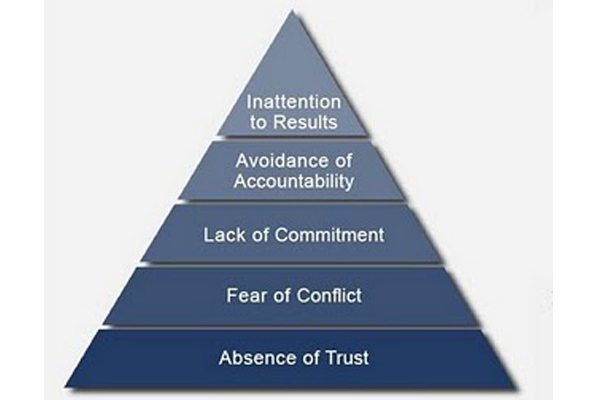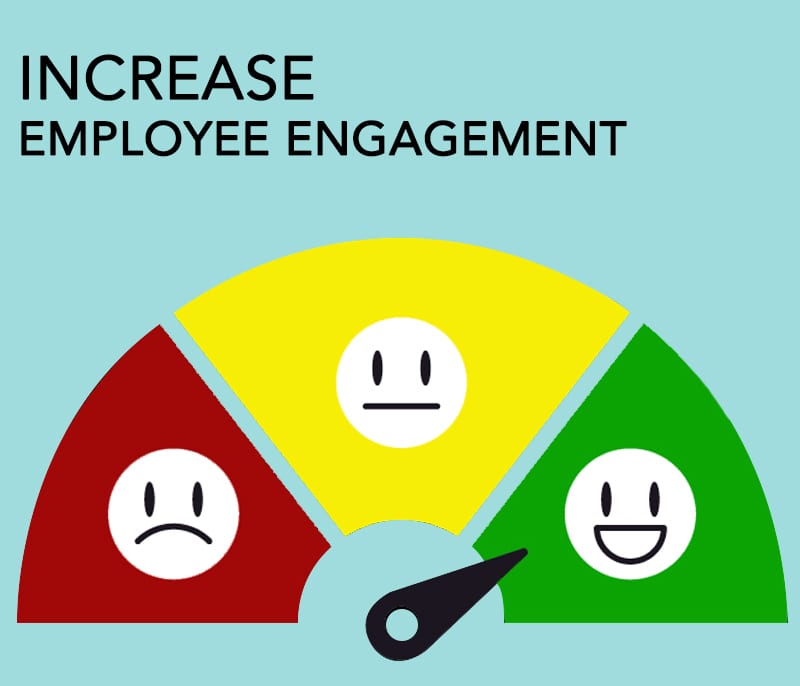A leadership fable by Patrick Lencioni, The Five Dysfunctions of a Team, really brings to light how teamwork remains the ultimate competitive advantage, both because it is so powerful and so rare.
“Teamwork is not a virtue, it’s a choice, you have to decide whether you want to be a team or not and accept the sacrifices and the cost it entails, ultimately it comes down to mastering some simple concepts that you probably already know but the hard part is doing them everyday, day in and day out, it’s a discipline of mastering some simple things”
Teamwork is the most untapped competitive advantage of business today, the question though is, why is it so rare? For all the talk about teamwork and all the attention it supposedly receives, it isn’t apparent in most organizations. Why?
Well, first I think the word “teamwork” has been overused and lost much of its meaning like so many other buzz words in the corporate world. That is perhaps why team work is not a virtue, rather it’s a choice and a strategic one. It’s a purposeful decision that organizations need to make.
Second, people tend to overcomplicate teamwork; the fact is, it’s simple, in theory anyway, most of us already know what teamwork requires but in practice, teamwork is indeed difficult. To overcome these problems, teams must be willing to invest significant time and energy and discipline.
“If you could get all the people in an organization rowing in the same direction, you could dominate any industry, in any market, against any competition, at any time.”
To get the people in a team aligned and rowing in the same direction requires leaders to address the following five dysfunctions of a team.
Dysfunction 1: Absence of Trust

The author here is not referring to the predictive trust, which is the ability to predict how someone is going to act because you have known them for a long time. But the type of trust the author is talking about here is the ability of group members to show their weaknesses, to be vulnerable and open with one another.
Vulnerability- based trust, that’s the ability of team members to be emotionally vulnerable with one another but not in a contrived or a touchy feely kind of way, they need to say things like “I was wrong,” “I made a mistake,” “I need help,” “I’m not sure,”you’re better than i am at that,” and “I’m sorry”. Why is it so important?… because teams that have an absence of trust often exhibit the following behaviors:
- They conceal their weaknesses and mistakes from one another
- They hesitate to ask for help or provide constructive feedback
- They don’t offer help to people outside of their own areas of responsibility
- They jump to conclusions about the intentions and aptitudes of others without attempting to clarify them
- They fail to recognize and tap into one another’s skills and experiences
- They waste time and energy managing their behaviors for effect
- They hold grudges
- They find reasons to avoid spending time together
The key to overcoming a lack of trust is shared experiences, multiple follow-throughs and integrity. In the fable, the team completes a Myers Briggs assessment to get the team talking about one another’s strengths and weaknesses and so become comfortable with one another.
The primary role of the leader is to lead by example, be the first one to be vulnerable, and create an environment where it’s safe to be vulnerable. Building trust makes conflict possible!
Dysfunction 2: Fear of Conflict
“The teams that have regular conflict around issues are the same ones that don’t have conflict around character, because they have said everything what needs to be said, there is no oxygen for back channel politics”
When the author talks about conflict, he is talking about productive, ideological conflict: passionate, unfiltered debate around issues of importance to the team. Teams tend to avoid conflict often replacing it with an artificial harmony.
“Harmony itself is good, I suppose, if it comes as a result of working through issues constantly and cycling through conflict. But if it comes only as a result of people holding back their opinions and honest concerns, then it’s a bad thing.”

We wear masks and focus on being nice to everyone. however, productive conflict is required for teams to become functional. One of the worst team dysfunctions is when you have a team of “yes men”.The teams that fear conflict…
- have boring meetings
- create environments where back channel politics and personal attacks thrive
- ignore controversial topics that are critical to team success
- fail to tap into all the opinions and perspective of team members
- waste time and energy with posturing and interpersonal risk management
It’s unrealistic for someone to say, “I’m sorry, but i don’t agree with your approach to the project,” and not expect the other person to feel some degree of personal rejection. But if the team members are not making one another uncomfortable at times, if they never push one another outside of their emotional comfort zones during discussions, it is extremely likely that they’re not making the best decisions for the organizations.
Dysfunction 3: Lack of Commitment
When teams engage in productive conflict they can confidently commit and buy-in to decisions. Commitment is a function of clarity and buy-in. Productive teams make clear decisions and are confident that they have the support from every team member. A lack of commitment usually arises from not hearing all the teams concerns before making a decision. There can be no commitment without debate. People will not buy into something when their opinions and thoughts on the matter were not included and discussed. “If they don’t weigh in, then they won’t buy in.”
A team that fails to commits…
- creates ambiguity among the team about direction and priorities
- watches windows of opportunity close due to excessive analysis and unnecessary delay
- breeds lack of confidence and fear of failure
- revisits discussions and decisions again and again
- encourages second-guessing among team members
“When people don’t unload their opinions and feel like they’ve been listened to, they won’t really get on board.”
Leaders can help to facilitate commitment by reviewing all key decisions made at the end of team meetings, making responsibility and deadlines clear.
Dysfunction 4: Avoidance of Accountability
Without team commitment you cannot have accountability. If the team is to be accountable, everyone must have a clear understanding of what is expected of them.
“People aren’t going to hold each other accountable if they haven’t clearly bought in to the same plan.”
Teams that do not hold one another accountable…
- create resentment among team members who have different standards of performance.
- encourage mediocrity
- miss deadlines and key deliverables
- place an undue burden on the team leader as the sole source of discipline
It’s often the case, that when teams are not holding one another accountable it’s usually because they’re not measuring their progress. It’s important to make clear what the team’s standards are, what needs to get done, by who and by when. Ambiguity is the enemy of accountability.
Dysfunction 5: Inattention to Results
When teams are not held accountable, the team members tend to look out for their own interests, rather than the interests of the team. A healthy team places team results as the most important goal. When all team members place the team’s results first the team becomes results orientated.
“Our job is to make the results that we need to achieve so clear to everyone in this room that no one would even consider doing something purely to enhance his or her individual status or ego. Because that would diminish our ability to achieve our collective goals. We would all lose.”
When a team fails to focus on results, they…
- rarely defeat their competitors
- lose achievement-oriented employees
- encourage team members to focus on their careers and individual goals
- become easily distracted
- stagnate and fail to grow
Result-oriented teams establish their own measurements for success. They commit early and publicly to what the team will achieve, and constantly review progress against those expected achievements (a.k.a scorecard). The key to success for a team is that its members embrace a collective pursuit for the best interest of the whole.
The book is small and easy to read and the model provided is simple to understand making it a powerful tool for helping teams improve. I highly recommend this book to anyone, who leads a team. This book will help you understand what a successful team looks and feels like.
Do read it and share your opinions with us!










